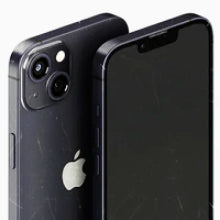Wireless Charging: Everything You Need to Know

How does wireless charging work?
Wireless charging technology has been included in smartphones since the early 2010s but given the wire-free appeal, its applications are wide — and will be even wider in the future: think electric toothbrushes, laptops, cars and everything connected in IoT (Internet of Things).
Wireless charging is the transfer of power from a power outlet to your device, without the need for a connecting cable.
The main wireless standard is Qi and it’s based on inductive charging. Power is created by sending energy from point A (transmitter) to B (receiver) to create an electromagnetic field.
With its promise of mobility, wireless charging has big potential, but so far the technology uses charging pads and the distance covered is small (40mm for Qi standard).
Is wireless charging bad for your phone?
Short answer, no. Wireless charging is actually a safer way to transfer power to your phone.
Pros:
-
There are no wires involved so a power outage will not affect your device
-
It puts less strain on the charging port of your phone
-
It’s easier to find a charger for your phone anywhere in the world
Cons:
-
Wireless charging is slower
-
You can’t use your phone while it’s charging
-
Not all phones have it
Which iPhones have wireless charging?
Apple adopted wireless charging in 2017 — later than its Android competitors — with the iPhone X and iPhone 8 and iPhone 8 Plus. Since then it's appeared in subsequent models such as iPhone XS and XS Max, iPhone XR, iPhone 11 and iPhone 11 Pro, as well as new-generation iPhone SE.
Google has adopted wireless charging technology ever since Nexus 5 (alongside LG) but perfected it with Pixel 4/4XL, Samsung has supported wireless charging since the Galaxy S6 and Huawei introduced it with the Mate 20 Pro.
Looking for a cordless charging smartphone? Get it at OzMobiles.









